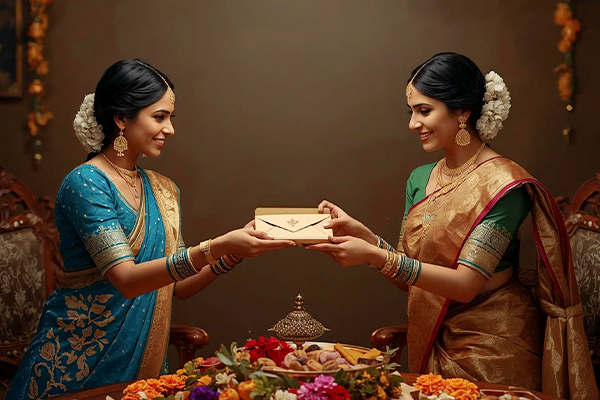
You've probably received an envelope with money on a special occasion. Maybe during a wedding, a housewarming, or even a baby’s first birthday. It might have seemed like a simple gesture, but in Indian culture, that little envelope carries something far greater than its monetary value.
It’s called Shagun. A timeless expression of goodwill, blessings, and sacred intent.
Shagun isn't about the amount; it’s about the energy you offer. Wrapped in tradition and love, it’s a silent way of saying, “May this moment be filled with positivity, prosperity, and protection.”
From coins tucked in a red cloth to ₹101 handed over with a tilak on the forehead, Shagun transforms an ordinary exchange into a spiritual offering. It is the ritual of giving, not just from the hand, but from the heart.
In every home, across every generation, Shagun lives on as a quiet reminder: When you give with love, even the smallest offering becomes sacred.
What does “Shagun” actually mean?
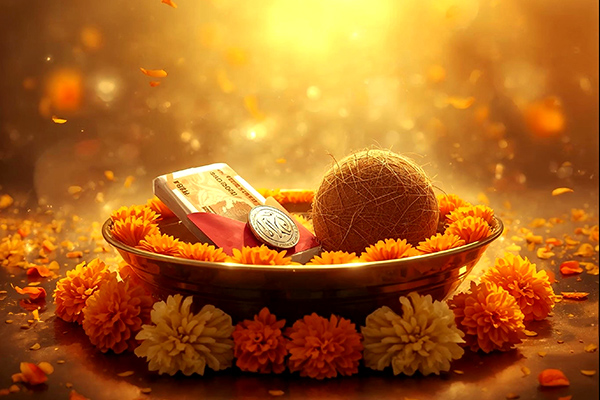
The word Shagun finds its roots in Sanskrit, where it simply means “auspicious” or “a good omen.” In Indian culture, it refers to any offering, big or small. That carries with it positive energy, blessings, and sacred intention, especially during the start of something new.
But Shagun is not just a material exchange. It’s a gesture of goodwill, a silent prayer, a way to infuse a moment with grace and divine support. Whether it’s a ₹101 note folded into an envelope, a silver coin gifted at Diwali, or a coconut offered during a Griha Pravesh, the true power of Shagun lies in the intention behind the offering.
Here’s what defines a true Shagun:
- It marks the beginning of something sacred, be it a wedding, festival, childbirth, or new venture.
- It is always given with Sankalpa. A heartfelt intention that says, “May your path be blessed.”
- It values emotion over expense. Even a single rupee becomes meaningful when offered with devotion.
At its heart, Shagun is about transforming a simple act of giving into a sacred ritual. It’s how we turn love into a blessing, and a small gesture into something deeply spiritual.
So, the next time someone hands you Shagun, know this:It’s not just a gift, it’s a blessing wrapped in tradition, wishing you a journey filled with grace, luck, and light.
Why is Shagun given?
Think back to the last time someone handed you an envelope with a shy smile or placed a silver coin in your hand during a festive ritual.
You may not remember the exact amount, but you probably remember the feeling, The warmth, The blessing, The unspoken love behind that gesture.
That is the essence of Shagun.
Shagun is given to bless beginnings, to mark important life transitions with something more than just words. It is how elders give their Aashirwad, how friends show their joy, and how families express their support, without saying much at all.
Here’s why Shagun holds such importance:
- To Invite Auspiciousness: Every new beginning, be it a marriage, a child’s birth, a new home, or a job, is seen as a sacred doorway. Shagun is a way of inviting prosperity, protection, and divine grace into that journey.
- To Share Blessings, Not Just Money: What’s given might be a small amount, but the thought behind it is vast. It carries the energy of 'May you grow, thrive, and be protected from harm.'
- To Show Presence and Support: Sometimes words fall short. Shagun becomes the silent language of care, a way of being part of someone’s joy without fanfare.
- To Strengthen Emotional Bonds: In Indian culture, rituals often become the thread that binds generations. Shagun is one such thread, connecting people through shared traditions and heartfelt giving.
In essence, Shagun is given to sanctify a moment, to turn an event into a blessing, and to say, without saying: “May this moment open the door to something beautiful.”
The Belief Behind Offering Money or Gifts
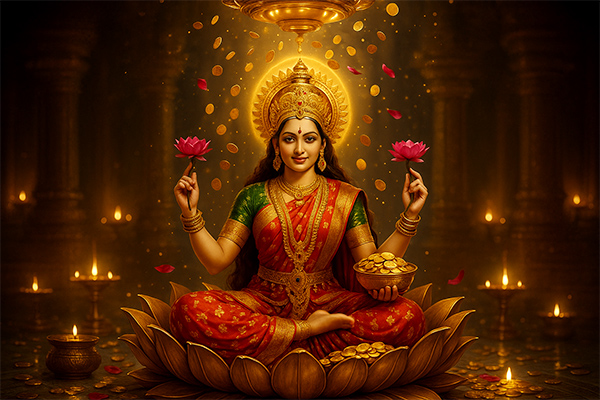
In Indian tradition, Shagun is often given in the form of money, coins, silver items, or symbolic gifts, not just for convenience, but for what these items represent.
Money is a symbol of Lakshmi, the goddess of wealth and prosperity. When given with reverence, it’s believed to carry the essence of abundance into the life of the receiver. A coin isn’t just a coin, it’s a wish for flow, growth, and success.
Similarly, items like sweets, rice grains, coconuts, or cloth are offered as Shagun in different rituals. Each has its own symbolic meaning:
- Coins or currency represent movement and circulation. Energy that should keep flowing.
- Coconuts represent purity and new beginnings.
- Rice and jaggery symbolize nourishment, sweetness, and fertility.
- Silver items are considered purifying and are often used during spiritual ceremonies.
These gifts are tangible, but their purpose is subtle:
To make your intention visible.
To turn a feeling into a sacred act.
In this way, Shagun bridges the spiritual and material worlds, helping blessings take a form that can be held, remembered, and cherished.
Role of Intention and Blessings Over Value
In the tradition of giving Shagun, it’s never about how much you give. It’s about how you give.
Whether it’s a ₹1 coin or ₹1001, the true power of Shagun lies in the intention behind the offering. In Indian culture, this intention, or Sankalpa, is considered the soul of the act. It is your inner wish, silently infused into what you’re giving, that carries energy forward.
When you offer Shagun with a pure heart, you’re doing more than giving a gift, you’re inviting abundance, peace, and grace into someone’s life.
And when such an offering is made with devotion and love, it’s believed that it sets a ripple into motion, not just for the receiver, but for the giver too. That is the sacred cycle of dana (giving): it purifies the mind, opens the heart, and invites prosperity to flow freely through you.
Here’s why intention matters more than value:
- A small coin given with love holds more power than a large sum given without feeling.
- The right energy makes a simple gift feel like a divine blessing.
- It’s the emotion behind the gesture that creates a lasting impact.
In the eyes of Dharma, it’s not the currency that counts, it’s the blessing you wrap around it.
So, when you give Shagun, pause for a moment. Offer it with a silent prayer. That subtle intention becomes the real wealth you're passing on, one that carries the power to uplift, protect, and bless.
When is Shagun traditionally given?
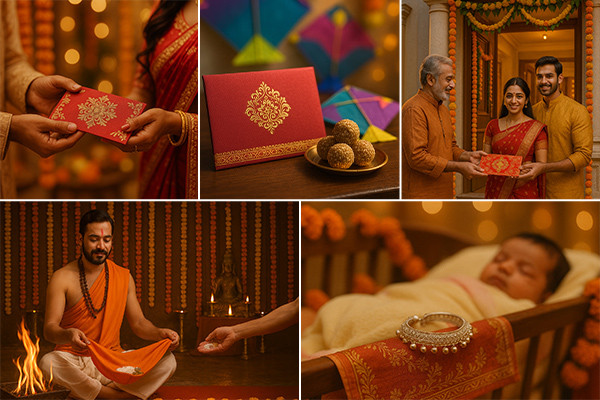
Shagun plays a meaningful role in almost every sacred or celebratory moment in Indian life. It’s offered whenever something new, transformative, or spiritually significant begins, to invoke blessings, protection, and auspiciousness.
Here are the occasions when Shagun is traditionally given:
-
Weddings and Engagements
Guests offer Shagun in the form of envelopes, gold, silver, or useful gifts to bless the couple with harmony, abundance, and fertility. -
Births and Naming Ceremonies (Namkaran Sanskar)
Shagun is offered to the newborn as a gesture of love, protection, and blessings for a bright future. It may be placed near the cradle or under the baby’s pillow. -
Festivals
During occasions like Diwali, Raksha Bandhan, Makar Sankranti, or Holi, Shagun is exchanged among family members, especially elders giving it to younger ones — as a joyful sharing of blessings and goodwill. -
New Beginnings
Buying a home, starting a new business, beginning a new job, or acquiring a new vehicle, all are considered auspicious moments where Shagun is offered to ensure success and stability. -
Religious Ceremonies and Yajnas
Shagun is given as Dakshina to priests and spiritual guides who conduct rituals. It’s not seen as payment, but as an offering of gratitude for invoking divine presence and blessings. -
Guru Dakshina (Spiritual Offering to the Guru)
In spiritual traditions, disciples offer Shagun as Guru Dakshina after receiving knowledge, blessings, or initiation. Even a symbolic offering, when given with surrender and reverence, holds immense spiritual value. -
Spiritual Journeys and Pilgrimages
Before someone leaves for a yatra or pilgrimage, family members may give Shagun to wish them a safe, fruitful, and blessed journey. It’s a way of sending love, support, and spiritual encouragement. -
Examinations and Personal Milestones
Students often receive Shagun before major exams or interviews — not just as encouragement, but as a silent prayer for confidence and success. -
Samskaras and Rites of Passage
From Upanayana (sacred thread ceremony) and Griha Pravesh (housewarming) to Antyeshti (funeral rites), Shagun is offered at each major life passage to mark the moment with sacred energy and responsibility.
In essence, Shagun is offered at the moments when life shifts, from one phase to another, one identity to another, or one path to a higher one.
It is a quiet yet powerful way of saying: “May you walk forward with blessings at your side.”
How Much is Considered a Good Shagun Amount?
When someone hands you Shagun, whether it’s ₹21 or ₹1001, it may seem like just a number. But in Indian tradition, that number is never random. It’s rooted in intention, symbolism, and spiritual wisdom.
Shagun is not about how much you give. It’s about how and why you give it.
You’ll often notice amounts like ₹101, ₹501, or ₹1001. That extra ₹1 added to a round number is deeply symbolic. It represents the idea that the blessing you’re offering is not complete, that it should continue to grow. In spiritual terms, it reflects the flow of abundance, a way of saying, “Let there always be more joy, more prosperity, more grace.”
This extra rupee becomes a spiritual marker of continuity, preventing the energy from “closing off” at a perfect number. Odd numbers are considered energetically active, they keep things moving. Even numbers feel final; odd ones suggest there’s more to come.
Shagun amounts vary based on occasion:
₹11 or ₹21, for everyday blessings or when sending someone off with good wishes
₹101 or ₹201, common at religious functions, housewarmings, and naming ceremonies
₹501 or ₹1001, for weddings, births, or major life events, where the blessings are meant to multiply over time
The amount also reflects your relationship with the person and the depth of your prayer, not your wallet. A small offering given with love and devotion holds far more spiritual power than a large sum given with indifference.
At its core, Shagun is a sacred act. It’s your prayer in a tangible form, a way of transferring good energy into someone’s life.
Why Odd Numbers Are Preferred in Indian Rituals
If you’ve ever received Shagun as ₹101, ₹501, or ₹1001, you’ve witnessed a sacred detail rooted in deep spiritual thought. In Indian rituals, especially among Hindus, odd numbers are not just tradition; they are intentionally chosen to carry spiritual energy, continuity, and divine symbolism.
The practice of giving Shagun in odd numbers, particularly ending in ‘1’, is widespread. But why that extra one rupee?
Here are the spiritual and symbolic reasons:
The Number One Represents Oneness and Permanence
The number 1 is indivisible. It cannot be split, symbolizing unity, stability, and the unbreakable bond between the giver and the receiver. It reflects a wish that the relationship or the blessings shared through the Shagun remain lasting and undivided.
The Extra ₹1 Invites Ongoing Prosperity
The addition of ₹1 turns a round figure like ₹100 into ₹101, sending a subtle message:
“May this prosperity not end here. May it continue to grow.”
It carries the energy of hope, continuity, and expansion, reminding us that blessings should never feel finite.
Avoidance of Zero as an Ending
In some traditions, the number zero is seen as void or inauspicious when used alone at the end of a gift amount. By adding ₹1, the giver turns that zero-ending number into something alive, active, and spiritually complete.
Metal Coin as Symbol of Earth and Wealth
Historically, Shagun was often given in the form of metal coins, silver or gold; representing purity, value, and connection to the Earth. In today’s era, a ₹1 metal coin is considered a humble yet meaningful continuation of that practice. It is also seen as a gesture of respect to Goddess Lakshmi, who is associated with abundance and wealth.
Odd Numbers Symbolize Energy in Motion
In rituals, odd numbers are preferred because they carry energy forward. Even numbers feel stable but closed. Odd numbers are believed to be open, dynamic, and spiritually progressive.
From mantras chanted in 108 repetitions, to 3 rounds of pradakshina, or 11 coconuts offered in a yajna, odd numbers have always played a sacred role in dharmic traditions.
What Can Be Given as Shagun?
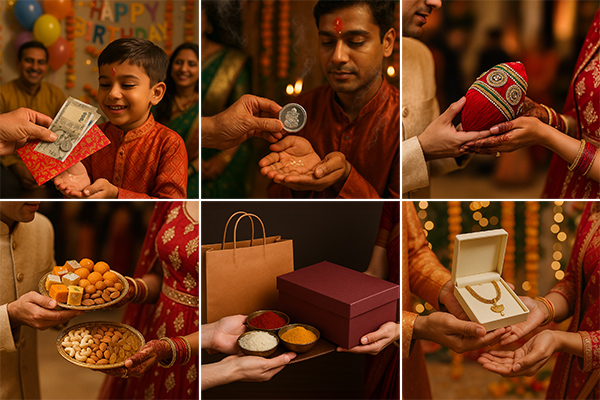
While money is the most commonly offered form of Shagun today, the tradition goes far deeper than envelopes and notes. Shagun is a symbol of sacred intent. And it can take many forms, depending on the occasion, region, and cultural background.
At its heart, Shagun is about giving something that carries blessings, conveys goodwill, and marks the moment as spiritually auspicious.
Here are some meaningful forms Shagun can take:
Cash (with the extra ₹1): The most common form, offered in envelopes, sometimes with a tilak or rice grains for blessings. It’s simple, sacred, and universally understood.
Silver Coins: Often embossed with images of Lakshmi, Ganesha, or other deities, silver coins symbolize purity, prosperity, and divine blessings. They are especially common during Diwali, childbirth, or weddings.
Coconuts: In many traditions, a coconut wrapped in red cloth is given as Shagun. It signifies fertility, protection, and the offering of one's ego to the divine.
Sweets and Dry Fruits: Alongside money or symbolic gifts, sweets are given to sweeten the moment and share joy. Dry fruits are considered energy-giving and auspicious, making them ideal for festivals and weddings.
Rice, Kumkum, and Haldi: In sacred ceremonies, Shagun may be given in the form of these ritual items, often placed in a small pouch or container. Each carries spiritual vibration and cultural meaning.
Clothing or Fabrics: Sarees, dhotis, or new clothes are often given as Shagun during life ceremonies or to priests after a puja, symbolizing respect, abundance, and renewal.
Gold or Jewellery (for close relations): In family functions like weddings, engagement ceremonies, or childbirth, gold is offered not for its value alone but as a symbol of divine wealth and unbreakable blessings.
No matter what form Shagun takes, what matters most is the Bhaav (intention) behind it. A small coin given with love and reverence carries far more spiritual weight than something grand given without thought.
So, whether you’re offering a ₹101 note, a coconut, or a silver coin. Remember, You’re not just giving an object. You’re giving your blessings a form.
Shagun in Different Religions and Communities
Hindu Traditions
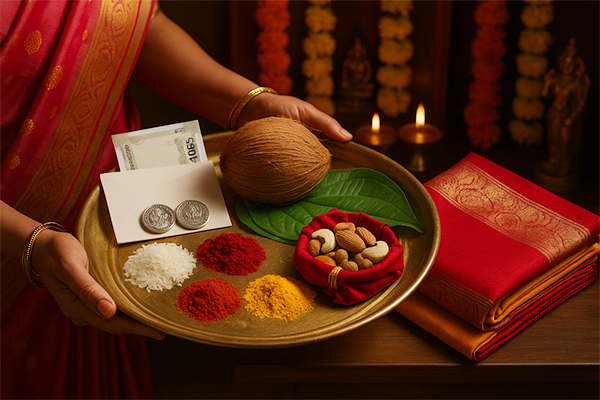
In Hindu culture, the concept of Shagun is deeply woven into every life stage. From birth to marriage, from housewarmings to death rituals. It is not just a gift, but a symbolic offering infused with blessings and spiritual intention.
Shagun is commonly given in the form of:
- Cash (usually in odd numbers like ₹101, ₹501)
- Silver coins with images of deities like Lakshmi or Ganesha
- Coconuts, betel leaves, or dry fruits wrapped in red or yellow cloth
- New clothes or fabrics
- Ritual items like rice, kumkum, and turmeric
It’s offered during pujas, Samskaras (life-cycle rituals), festivals like Diwali and Raksha Bandhan, and major occasions like weddings, childbirth, or Griha Pravesh (housewarming). Shagun is also offered as Dakshina to priests and as Guru Dakshina in spiritual lineages. A sacred way of expressing gratitude and receiving blessings in return.
At its heart, Shagun in Hinduism is a physical form of a heartfelt prayer, meant to invoke divine grace and abundance in someone’s life.
Sikh, Muslim, Jain & Other Cultural Variants
Across different Indian communities, the essence of Shagun remains the same, to bless a moment, celebrate a relationship, and express heartfelt goodwill, even if the customs vary.
Sikh Traditions:
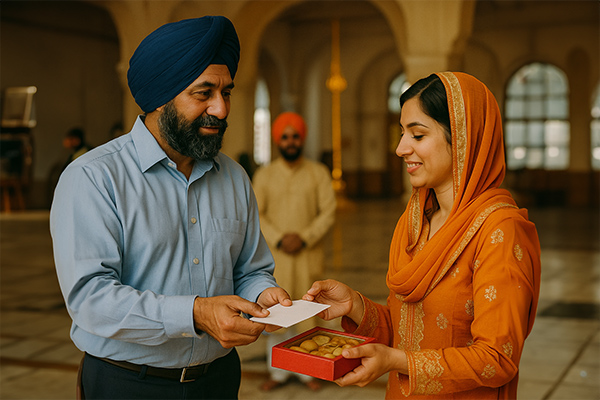
In Sikhism, Shagun is commonly offered during Anand Karaj (weddings), Naam Karan (naming ceremonies), and Gurpurabs (birth anniversaries of Gurus). It is usually given in an envelope with cash, accompanied by sweets or dry fruits. The gesture reflects respect, blessings, and a spirit of Seva (selfless giving).
Muslim Traditions:
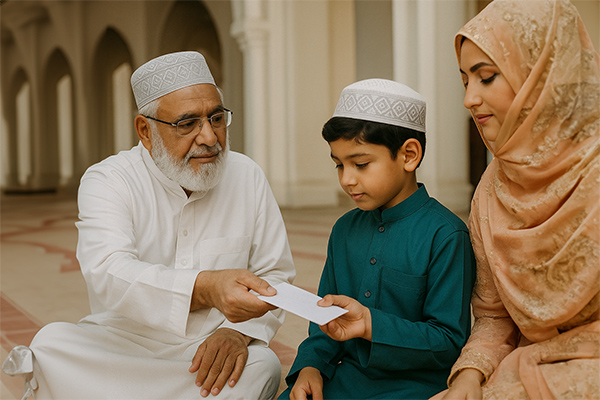
Among Muslims, the concept of Shagun is reflected in Eidi (gifts or money given during Eid) and Nazrana (offerings made during weddings or religious occasions). It is a way of extending Duaa (prayers), love, and prosperity. Shagun is often given by elders to younger family members as a sign of care and blessings.
Jain Traditions:
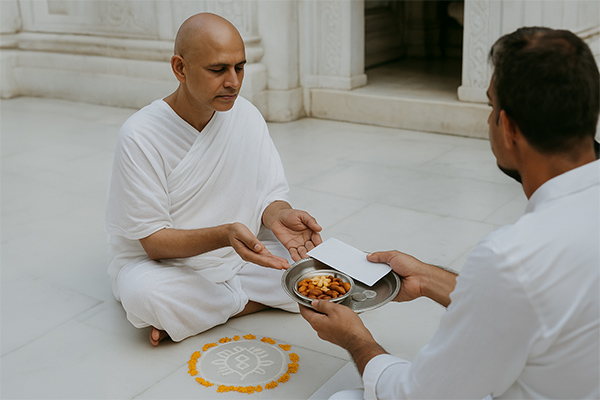
In Jain households, Shagun is given during auspicious events such as Paryushan, weddings, and important family rituals. Offerings often include dry fruits, money, or silver items; given with a deep sense of non-attachment, purity, and simplicity, in line with Jain values.
Other Communities:
Many Indian Christian families, especially in Kerala, Goa, and the Northeast, offer money and symbolic gifts during baptisms, weddings, confirmations, and Holy Communion ceremonies. The act of blessing through a gift is just as heartfelt and rooted in faith.
Despite the diversity in customs, the purpose remains universal: To honour the sacredness of life’s milestones through a tangible expression of blessings, love, and spiritual goodwill.
Modern-Day Shagun Practices
In today’s fast-paced world, where lifestyles are evolving and digital payments are replacing physical exchange, the tradition of giving Shagun has also found new expressions. Yet, at its core, the practice still remains deeply rooted in intention, emotion, and blessings.
Shagun has always been about the energy behind the offering, and that essence continues, even as the medium changes.
Here’s how Shagun is commonly practiced today:
Digital Gifting
With UPI, mobile wallets, and instant transfers, many people now send Shagun digitally. Especially when they’re unable to attend in person. A ₹101 sent over a money transfer app still holds meaning when it's accompanied by heartfelt blessings.
Designer Envelopes & Themed Packaging
From handmade envelopes with Sanskrit shlokas to eco-friendly boxes filled with dry fruits and coins, the presentation of Shagun has become more personalized and aesthetic, especially during weddings and festivals.
Customized Shagun Tokens
Many families now include meaningful add-ons like a Rudraksha bead, a silver coin, or a handwritten note along with the money. Adding depth and spiritual connection to the gesture.
Corporate & Professional Settings
Shagun is no longer limited to family functions. It is also exchanged during professional milestones like office openings, promotions, or new business ventures, reflecting goodwill in a broader sense.
Giving Back as Shagun
Some modern families choose to donate to charity in someone’s name as a form of Shagun. Blending tradition with seva (selfless service) and expanding the idea of blessings to benefit a wider circle.
Despite the shift in form, the soul of Shagun remains unchanged.

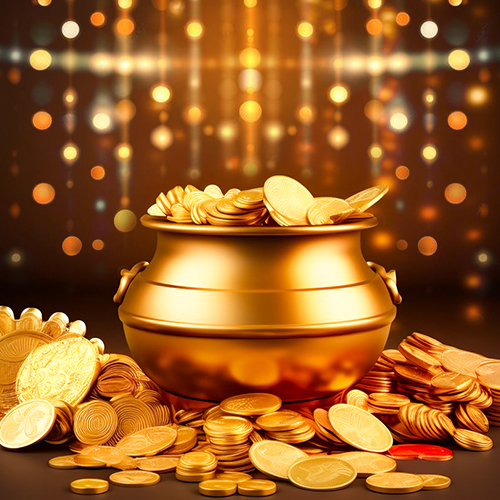
-in-Astrology.jpg)
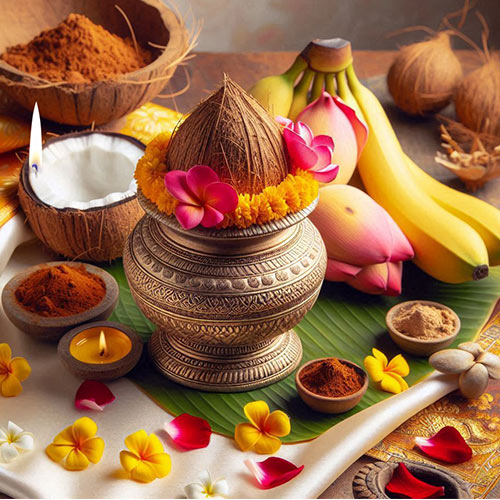
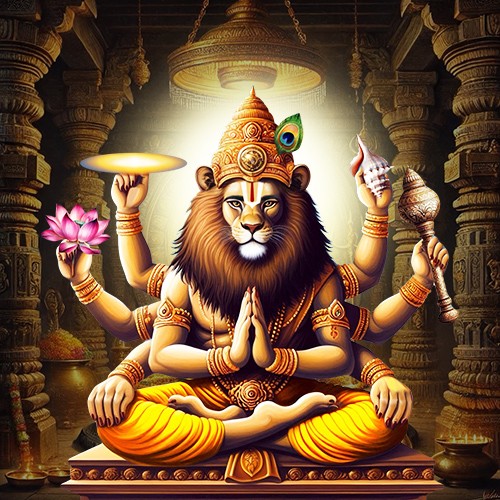
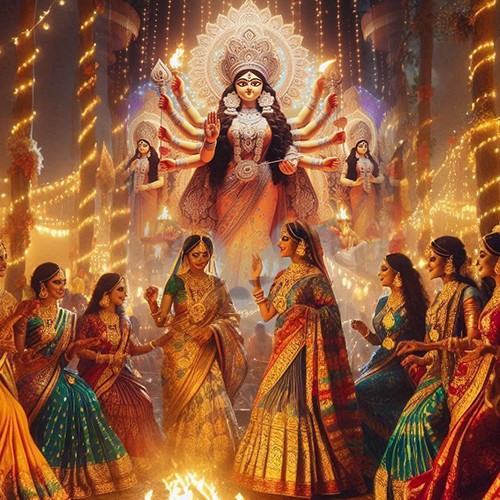
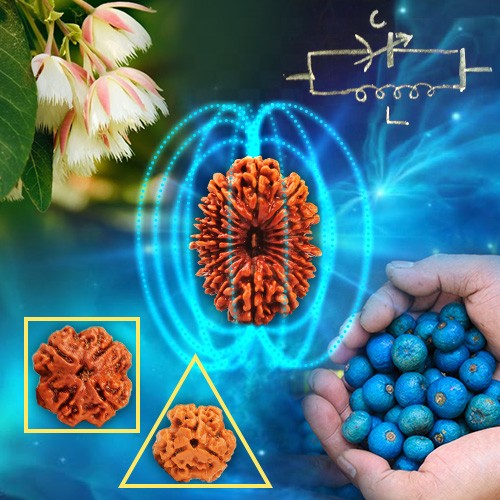

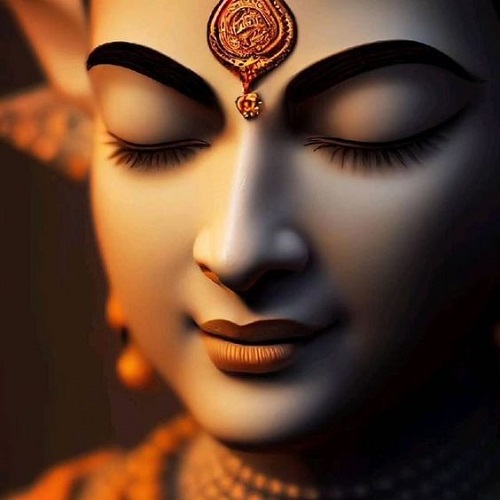
.jpg)
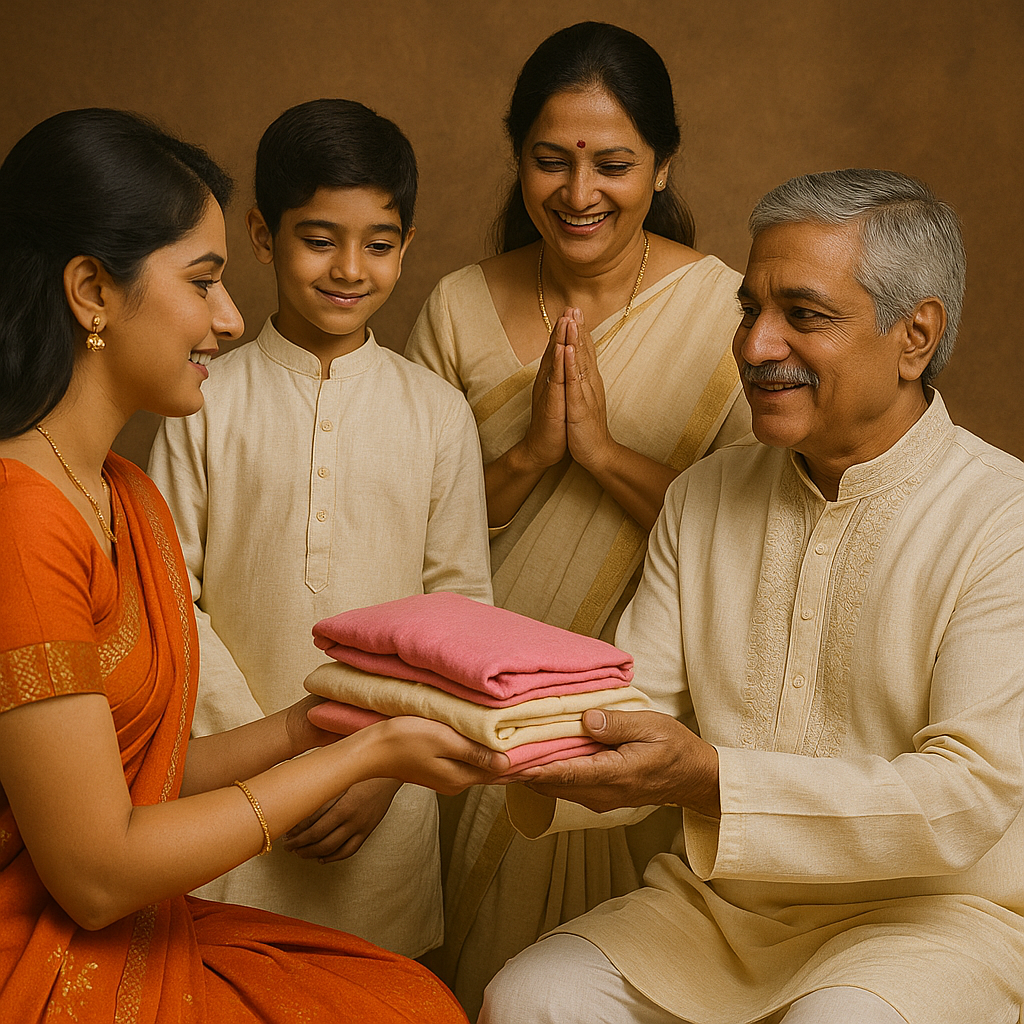
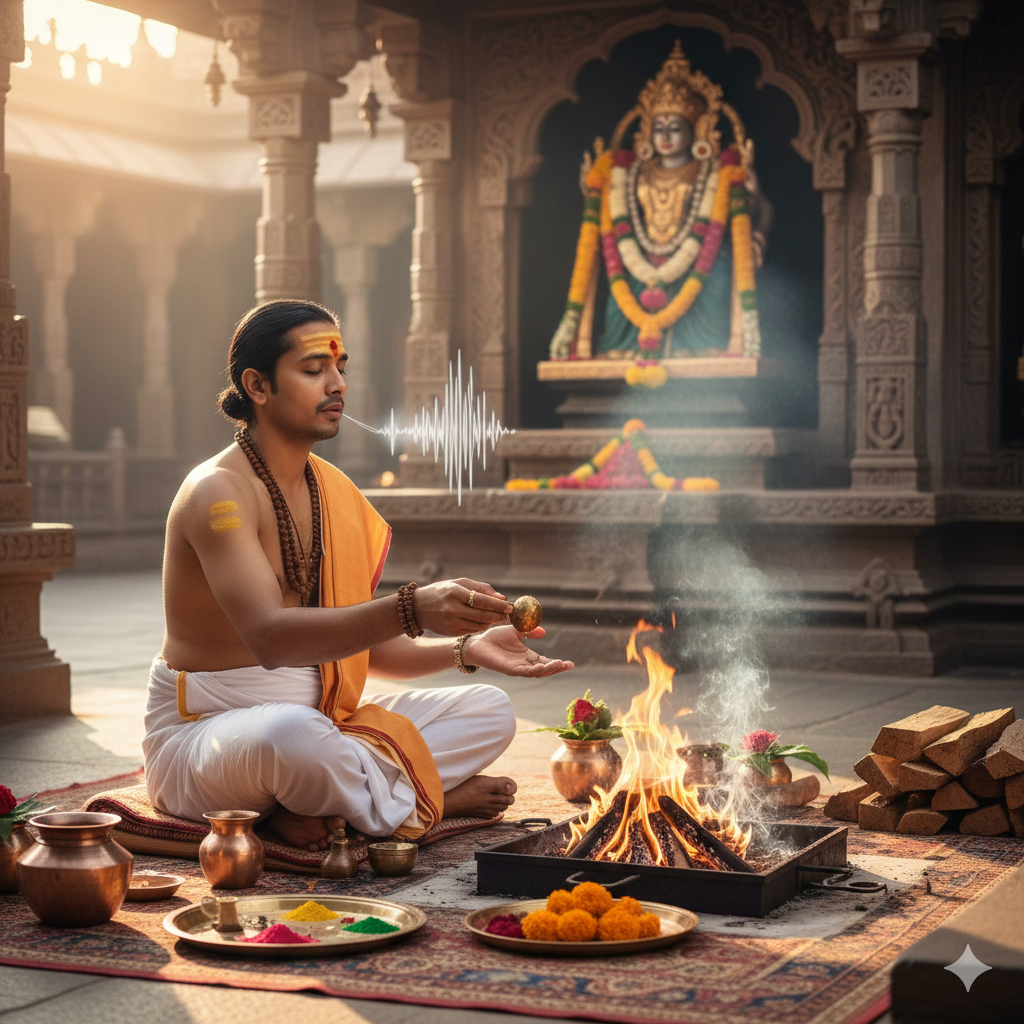
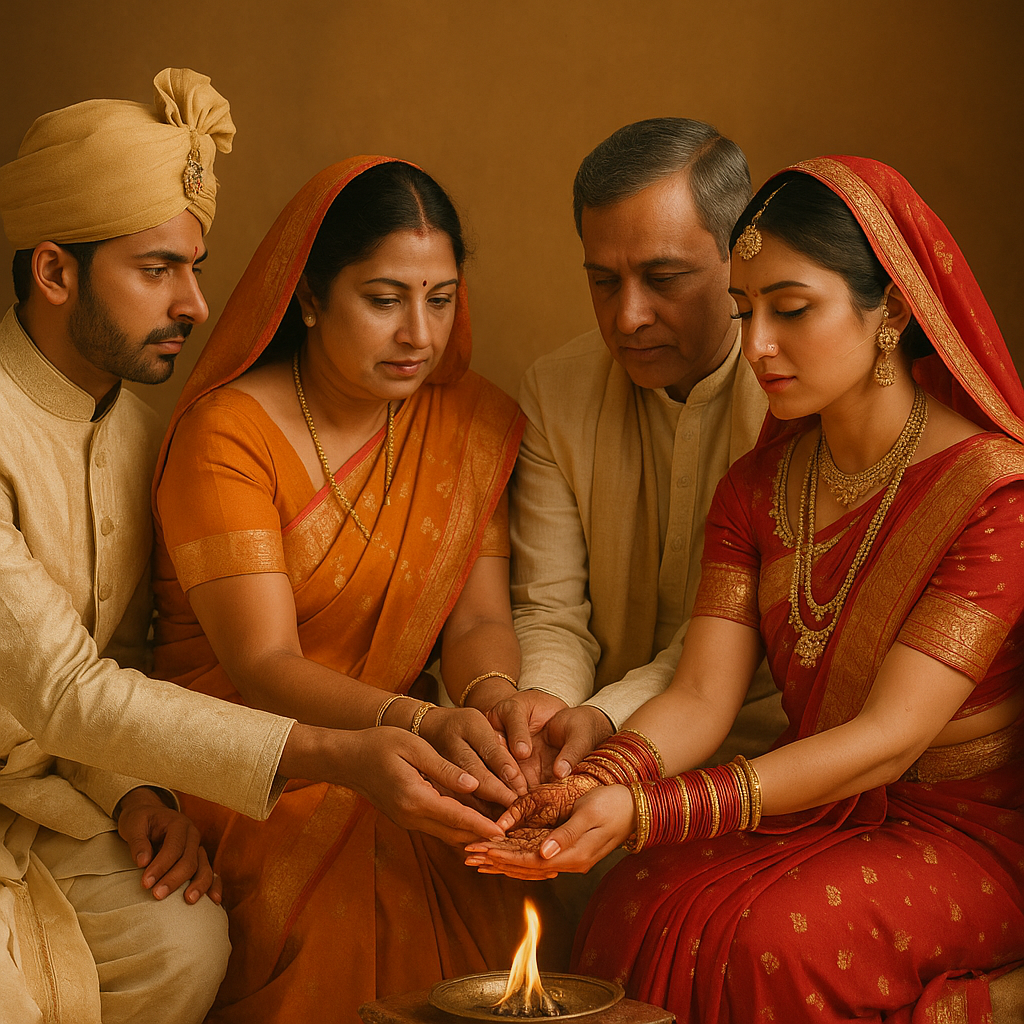
Comments 0
Leave your thought here